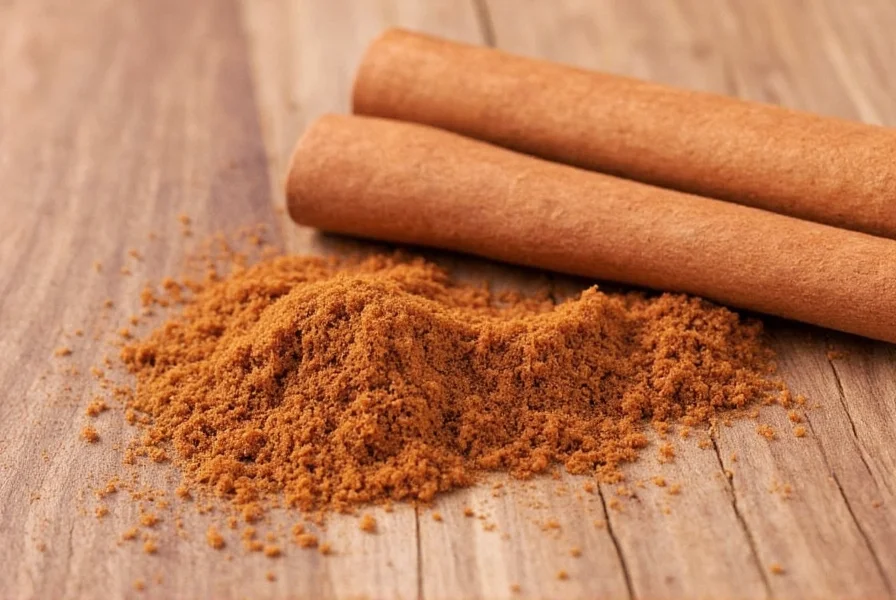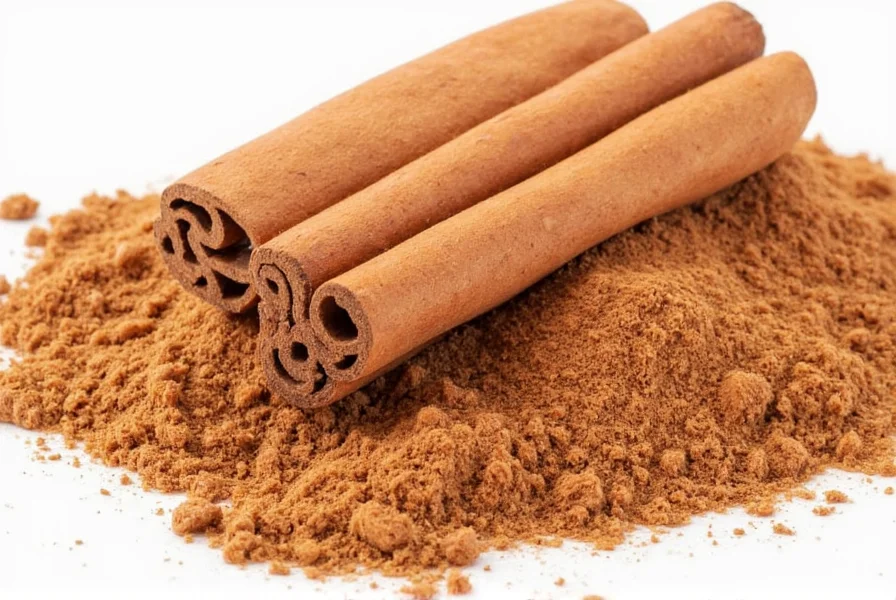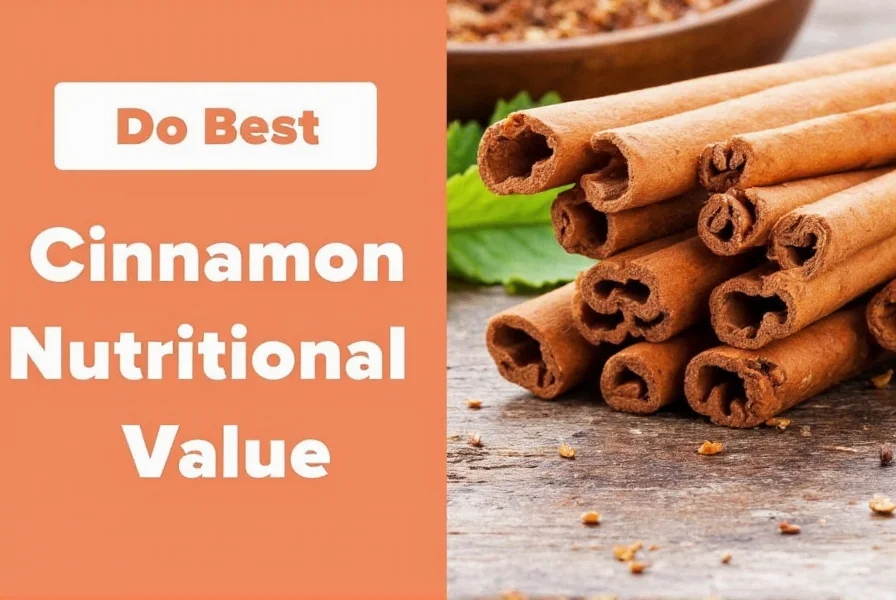Cinnamon isn't just a flavorful spice—it's a nutritional powerhouse with centuries of medicinal use. This comprehensive guide examines cinnamon's detailed nutritional composition, differentiates between common varieties, and presents evidence-based insights on its health effects. Whether you're sprinkling it on oatmeal or using it in baking, understanding cinnamon's precise nutritional value helps you maximize its benefits while avoiding potential risks.
Nutritional Profile of Cinnamon
According to USDA FoodData Central, ground cinnamon (per 1 teaspoon or 2.6 grams) contains the following essential nutrients:
| Nutrient | Amount per Teaspoon (2.6g) | % Daily Value* |
|---|---|---|
| Calories | 6 | 0% |
| Total Carbohydrate | 2g | 1% |
| Dietary Fiber | 1g | 4% |
| Sugar | 0g | 0% |
| Manganese | 0.3mg | 16% |
| Calcium | 26mg | 2% |
| Iron | 0.2mg | 1% |
| Vitamin K | 0.6mcg | 1% |
*Percent Daily Values based on a 2,000 calorie diet. Values may vary slightly by cinnamon variety and growing conditions.
Ceylon vs Cassia: Nutritional Differences
Understanding cinnamon nutritional facts per teaspoon requires distinguishing between the two primary varieties:
- Ceylon Cinnamon ("true cinnamon") - Lighter color, delicate flavor, lower coumarin content (0.017g per 100g). Contains slightly less manganese but is safer for regular consumption.
- Cassia Cinnamon - Darker, stronger flavor, higher coumarin content (up to 6.97g per 100g). Provides marginally more manganese but poses potential liver risks with excessive intake.
For those researching ceylon vs cassia cinnamon nutrition, the coumarin difference is critical. The European Food Safety Authority recommends limiting coumarin intake to 0.1mg per kg of body weight daily. Just one teaspoon of Cassia can contain 5-12mg of coumarin, potentially exceeding safe limits with regular use.

Science-Backed Health Benefits
The health benefits of cinnamon spice extend beyond its nutritional profile. Research published in Nutrition Journal confirms several evidence-based effects:
- Blood Sugar Regulation - Multiple studies show cinnamon can reduce fasting blood glucose by 10-29% in people with type 2 diabetes by improving insulin sensitivity.
- Antioxidant Power - Cinnamon ranks #1 among 26 spices tested for antioxidant activity, with ORAC value of 267,536 μmol TE per 100g, protecting cells from oxidative damage.
- Anti-Inflammatory Effects - The compound cinnamaldehyde demonstrates significant anti-inflammatory properties in laboratory studies.
- Heart Health Support - Regular consumption associates with reduced triglycerides, LDL cholesterol, and blood pressure in clinical trials.
These findings validate traditional uses while providing concrete data for those investigating cinnamon antioxidants and health effects. However, most studies use concentrated extracts, so moderate culinary use provides more modest benefits.
Safety Considerations and Recommended Intake
When determining how much cinnamon is safe to eat daily, consider these evidence-based guidelines:
- Cassia Cinnamon: Limit to 1 teaspoon (2.6g) daily due to coumarin content. Higher amounts may cause liver toxicity in sensitive individuals.
- Ceylon Cinnamon: Up to 1.5-2 teaspoons (4-5g) daily appears safe for most adults, with minimal coumarin concerns.
- Pregnant Women: Consult healthcare provider before regular medicinal use, though culinary amounts are generally safe.
- Medication Interactions: May enhance effects of diabetes medications and blood thinners—monitor with healthcare provider.
The National Center for Complementary and Integrative Health notes that while cinnamon is generally recognized as safe (GRAS) by the FDA as a food ingredient, therapeutic doses require medical supervision.
Practical Incorporation into Your Diet
Maximize cinnamon nutritional value in cooking with these simple strategies:
- Add ½ teaspoon to morning coffee or tea for natural sweetness without sugar
- Mix with Greek yogurt and berries for a nutrient-dense breakfast
- Combine with oats during cooking to enhance flavor and blood sugar benefits
- Create a savory rub with paprika and garlic powder for roasted vegetables
- Stir into warm almond milk with a dash of black pepper (enhances absorption)
For optimal nutrient retention, add cinnamon toward the end of cooking processes, as prolonged heat exposure can degrade some beneficial compounds.

Conclusion
Cinnamon's impressive nutritional profile makes it more than just a flavor enhancer—it's a functional food with scientifically supported health benefits. By understanding the cinnamon nutritional facts per teaspoon and choosing the appropriate variety for your needs, you can safely incorporate this ancient spice into your modern diet. Whether you select Ceylon for daily use or Cassia for occasional culinary applications, cinnamon remains one of nature's most versatile and beneficial spices when consumed mindfully.
Frequently Asked Questions
What is the most nutritious type of cinnamon?
Ceylon cinnamon offers the most favorable nutritional profile for regular consumption. While both varieties provide similar amounts of manganese and antioxidants, Ceylon contains significantly lower levels of coumarin (less than 0.02% compared to Cassia's 1-5%). This makes Ceylon safer for daily use without risking potential liver effects from excessive coumarin intake.
Can cinnamon help with blood sugar control?
Yes, multiple clinical studies demonstrate cinnamon's potential to improve blood sugar regulation. Research shows that 1-6 grams daily (approximately ½ to 2 teaspoons) can reduce fasting blood glucose levels by 10-29% in people with type 2 diabetes. The active compounds appear to increase insulin sensitivity and slow gastric emptying, though it should complement—not replace—standard diabetes management.
How much cinnamon is too much per day?
For Cassia cinnamon, exceeding 1 teaspoon (2.6g) daily may pose risks due to high coumarin content, potentially leading to liver toxicity with prolonged use. Ceylon cinnamon allows for slightly higher intake—up to 1.5-2 teaspoons (4-5g) daily—due to minimal coumarin. The European Food Safety Authority recommends keeping coumarin intake below 0.1mg per kg of body weight, which translates to approximately 5mg coumarin for a 130-pound person.
Does cinnamon lose nutritional value when cooked?
Some heat-sensitive compounds in cinnamon, particularly certain antioxidants, can degrade with prolonged high-heat cooking. To preserve maximum nutritional value, add cinnamon during the last 5-10 minutes of cooking or to finished dishes. Water-based cooking methods like oatmeal preparation retain more beneficial compounds than dry-heat methods. The mineral content (manganese, calcium) remains stable regardless of cooking method.











 浙公网安备
33010002000092号
浙公网安备
33010002000092号 浙B2-20120091-4
浙B2-20120091-4